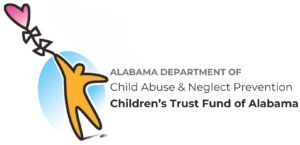Over the last several decades, cigarette and smokeless tobacco companies have been under scrutiny for their shady marketing tactics that effectively target young people. The marketing tactics used by Big Tobacco are so effective that several e-cigarette manufacturers have used the exact same trade secrets to advertise their products to American youth. E-cigarette companies even go as far as to make  unsubstantiated claims that their products are safer than cigarettes despite the fact that using any type of tobacco product is not safe for young people
unsubstantiated claims that their products are safer than cigarettes despite the fact that using any type of tobacco product is not safe for young people
The CDC reports that in 2014, nearly 2.4 million middle and high school students were regular e-cigarette users.[1] Since the vast majority of these products contain nicotine, e-cigarette use and vaping can be highly addictive – especially to a young, developing brain. Still, tobacco companies know that if they can hook a customer on their products when they are young, they have likely earned a life-long customer.
Money spent on e-cigarette advertising has been rapidly increasing since 2011, and according to the CDC, at least 69% of middle and high school students are exposed to these advertisements in places like retail stores, newspapers and magazines, TV shows or movies, and on the internet. Between 2011 and 2014, e-cigarette companies increased spending from $6.4 million to $115 million. During the same time period, e-cigarette use increased among high school students from 2% to 13%.[1]
But what is it that makes these ads so effective at getting young people to smoke despite all of the risks? Let’s take a look at the shadowy techniques used by Big Tobacco to market e-cigarettes and vaping devices to young people.
Using Emotional Appeal to Attract Youth
Studies have looked closely at the type of content contained within e-cigarette video ads to measure over 40 features that are known to be appealing to youth. Experts have found that all e-cigarette ads included at least some type of youth-appealing content involving strong emotional appeal.
Of the video ads studied, 68% used happiness, 41% used friendship, 24% used sex, and 24% used success. 87% of ads tried to appeal to customers by discussing the benefits of e-cigarettes over tobacco cigarettes, while 40% of video ads mentioned health.
The study concluded that due to relatively weak marketing regulations in the U.S., e-cigarette companies were able to use these youth-appealing marketing tactics to their advantage.[2]
Offering Scholarships To Students Willing To Write About The Benefits of Vaping
 According to NBC News, some e-cigarette sellers have offered scholarships by asking students to write essays regarding the potential benefits of vaping.[3] By offering these scholarships, e-cigarette sellers saw their brands being listed on university websites.
According to NBC News, some e-cigarette sellers have offered scholarships by asking students to write essays regarding the potential benefits of vaping.[3] By offering these scholarships, e-cigarette sellers saw their brands being listed on university websites.
While some scholarships were limited to applicants 18 years and older, others were open to younger teens or had no age limit at all. Adam Goldstein, director of Tobacco Intervention Programs at UNC-Chapel Hill, explains in an interview that “essays that require kids to write about potential positive health benefits, from their perspective as kids, really is manipulating kids in ways that is disingenuous.” Goldstein’s research also revealed that 11 companies, who offered scholarships, reserved the right to use essay responses for purposes outside of scholarship selection, including for advertising, further suggesting that these scholarships were being used in their marketing schemes.[4]
Not only have these scholarships drawn controversy because they are directly targeting young people, who are willing to write about their products, but also because listings on university websites helped improve the search engine results of these brands, further helping aid their marketing efforts at the expense of young people.
Bringing E-Cigarette Ads Directly To Youth Via Social Media
While e-cigarette companies still advertise on traditional media (television, packaging, product placement, and print), they have found huge success in social media marketing. Up to 76% of youth are on social media, and 92% of teens aged 13-17 years use the internet on a daily basis.[5]
Using tactics like emotional appeal, celebrity endorsements, cartoons, and animation on social platforms are all highly effective at appealing to youth – and the e-cigarette industry is well aware of this. They use a variety of methods on social media that attract young people, encourage their followers to share and interact with their content, and ultimately purchase their products.
A study that looked at e-cigarette advertising on social media found that:[5]
- In just 2 months researchers recorded more than 73,000 tweets on Twitter related to e-cigarettes, the vast majority of which were promotional in nature.
- On Instagram, photos listed under the hashtag “#vape” increased by 4 million from 2014 to 2014.
- By 2015, photo advertisements for e-cigarettes on Instagram outnumbered the personal photos posted of people vaping or using vaping products.
- A content analysis of YouTube videos related to e-cigarettes found that 85% contained industry-sponsored content.
This research concluded that youth, who were exposed to pro-tobacco social media advertising, had more positive attitudes toward smoking and increased smoking behavior.[5]
Using Fruity and Kid-Friendly Flavors That Appeal To Youth
Big Tobacco saw a great deal of success using colorful packaging and cartoon characters to represent their brand, and the vaping industry seems to be following a similar path. Walk into any vape store and you will immediately notice the plethora of bright-colored packaging, animated characters, eye-catching designs, and sweet flavors – all of which appeal to young people.
Studies have shown that 50% of e-cigarette video ads featured animation, and nearly 32% featured an actor, who appeared to be under 21 years old.[2] From past studies regarding Joe Camel and Camel cigarettes, we know that using animated characters is effective in appealing to young people.
When it comes to e-cigarettes, in particular, they are able to advertise with many more flavors than tobacco cigarettes. These flavors range from strawberry granola bar and watermelon to cotton candy and chocolate cannoli. According to the Truth Initiative, 43% of young people who had never used e-cigarettes before tried their first one because of appealing flavors. Middle schoolers who vape also report that their favorite flavors were fruits, candy, desserts, and other sweets, respectively.[6]
 Marketing In The Vaping Industry Today
Marketing In The Vaping Industry Today
In January of 2020, the FDA prohibited the sale of pre-filled cartridges for e-cigarettes in any flavor other than menthol or tobacco. The CDC explains that several states and communities have also taken steps to restrict the sale of flavored vaping products.[7] Still, despite the vast evidence of Big Tobacco purposefully targeting young people for decades, we see these products heavily marketed online and in the media. And, as e-cigarette devices continue to fall into the hands of middle school and high school students, it is increasingly clear that the industry will continue to put profit over public health.
References:
- https://www.cdc.gov/vitalsigns/ecigarette-ads/index.html
- https://www.ncbi.nlm.nih.gov/pmc/articles/PMC5221880/
- https://www.nbcnews.com/health/kids-health/vaping-essays-e-cigarette-sellers-offering-scholarships-n881361
- https://www.wunc.org/post/when-vaping-industry-offers-scholarships-it-marketing-teens
- https://www.ncbi.nlm.nih.gov/pmc/articles/PMC6335043/
- https://truthinitiative.org/research-resources/emerging-tobacco-products/e-cigarettes-facts-stats-and-regulations
- https://www.cdc.gov/tobacco/basic_information/e-cigarettes/Quick-Facts-on-the-Risks-of-E-cigarettes-for-Kids-Teens-and-Young-Adults.html









